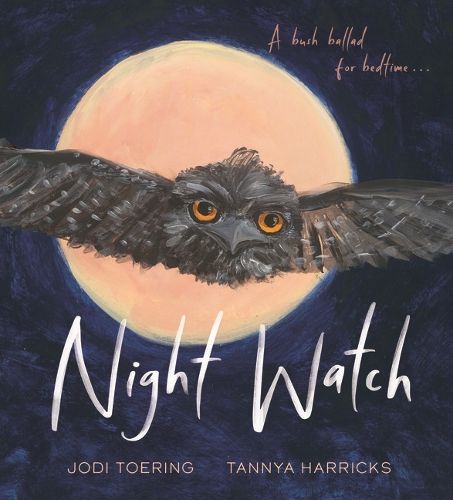Even without the prompt on the front cover, 'A bush ballad for bedtime', 'Night Watch ‘feels like an unapologetically Australianised ‘Time for Bed’. Ten Australian native species - yes, even the quail is Australian - are settling down for the night, but one has just woken up: the Tawny Frogmouth. There are two Tawny Frogmouths, and they form the 'Night Watch'. A night watch is usually a military or security detail whose job is to protect people and property from the threat of danger while most others are asleep. But the Tawny Frogmouth's role here is less that of policing, and more that of parenting. Its alertness as it flies straight towards the reader on the front cover and on pages 2-3 and 8-9 gives all other creatures permission to relax and recover.
I had to read the text twice before I understood an apparent mystery on p.10, where it says, 'Together they fly.' There are two frogmouths in the illustration, but the word text says that, when Tawny Frogmouth calls, 'Moon answers' and lights the way through the bush. From then on it's 'they' who patrol the bush. So 'Moon' is both the literal light (personified) in the night sky, and the second frogmouth who accompanies the first. It's an appealing integration of physical reality and spirit.
The two swoop and wheel over the Australian bush, while the quail, cockatoo, koala, echidna, wallaby, emu, numbat, pigmy possum and platypus are in their homes down below. As in ‘Time for Bed’, most of them have babies to care for - and, cleverly, the illustrator Tannya Harricks shows us where babies come from for at least one of the species included, as the platypus beds down for the night with her body curled round a clutch of eggs. In the final spread, there is a nod to the picture book classic ‘Owl Babies’, with the family together above the reassuring words 'All is well.'
Teachers will enjoy discussing with students native species, adults and their young, safety and parenting, and the meaning of the term all Australians learn early on: 'nocturnal'.

